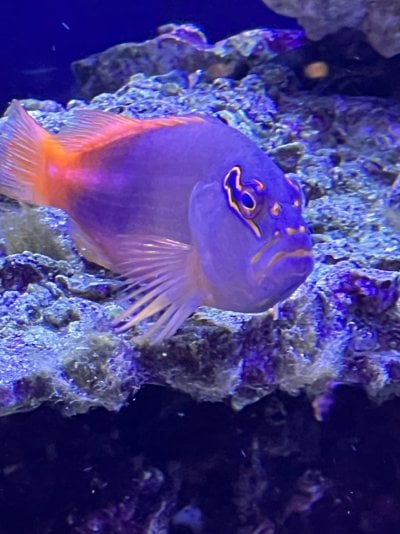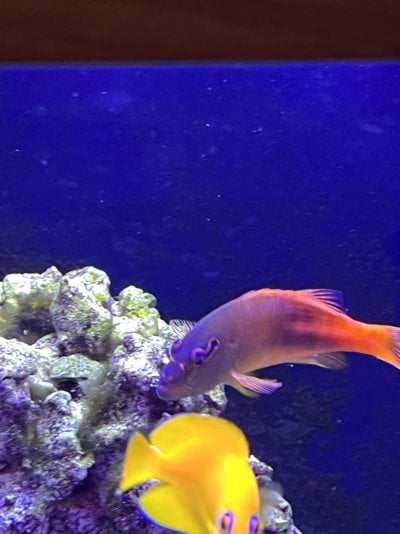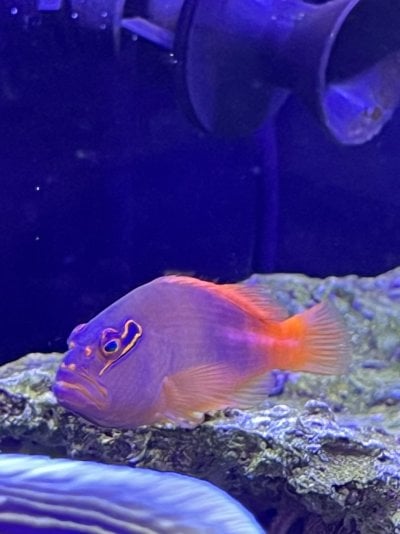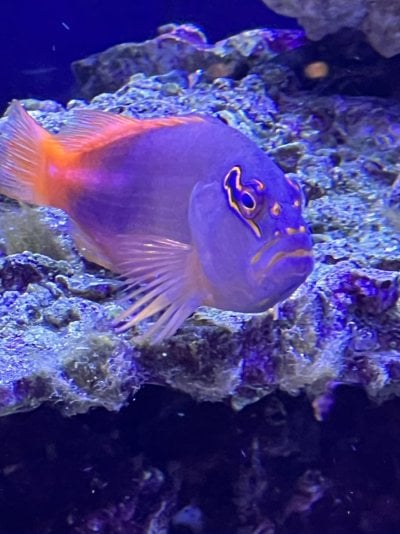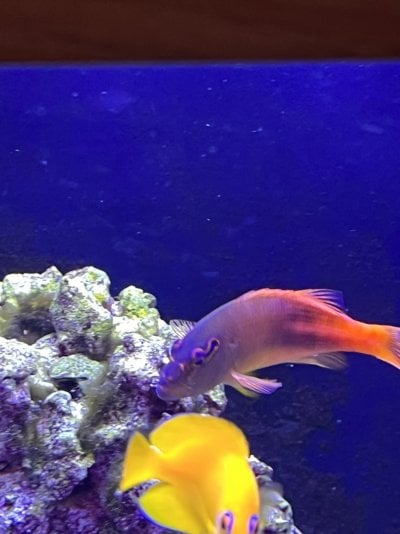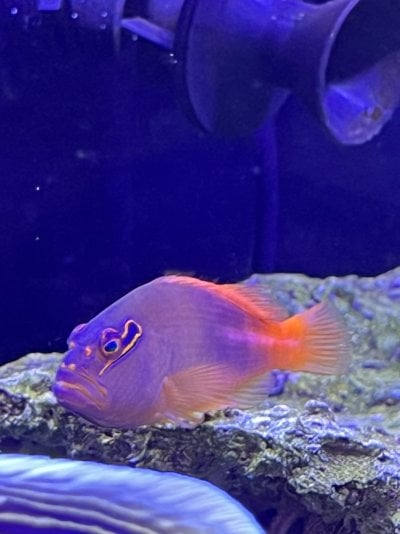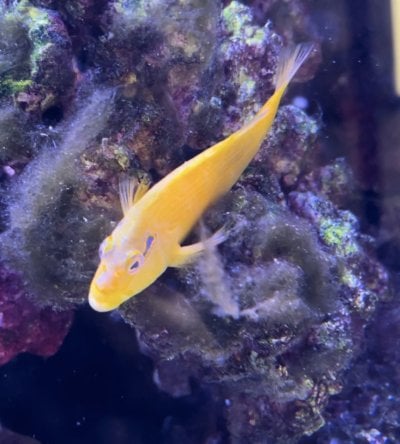Good Morning R2R Community,
I bought a beautiful Tahitian Hawkfish from a reputable retailer about 6 months ago. The fish was quarantined appropriately and introduced into my 300 gallon FOWLR. He immediately began eating and securing his spot in the aquarium. Soon thereafter, I noticed his gorgeous yellow color began to change into a more dull, grayish yellow. Initially, I thought he was sick, but that is not the case, as he is the boss of the aquarium. He lives with a bunch of gorgeous fish- Blueface angel, emperor angel, queen angel, lemonpeel angel, regal angel, purple tang, gem tang, dejardini tang, 6 line wrasse, melanarus wrasse, radiant wrasse, marine betta, snowflake eel, as well as a flamehawk fish, and a longnose hawk. There doesn't seem to be any major aggression issues, although I will see him chase the longnose occasionally. All the fish are well fed, fat, and happy with a variety of food and supplemented with selcon.
My question is simple and twofold, can anyone explain the color change, and how, if at all, can I get his color back?
Thank you.
I will upload a photo or two of the color tonight.
I bought a beautiful Tahitian Hawkfish from a reputable retailer about 6 months ago. The fish was quarantined appropriately and introduced into my 300 gallon FOWLR. He immediately began eating and securing his spot in the aquarium. Soon thereafter, I noticed his gorgeous yellow color began to change into a more dull, grayish yellow. Initially, I thought he was sick, but that is not the case, as he is the boss of the aquarium. He lives with a bunch of gorgeous fish- Blueface angel, emperor angel, queen angel, lemonpeel angel, regal angel, purple tang, gem tang, dejardini tang, 6 line wrasse, melanarus wrasse, radiant wrasse, marine betta, snowflake eel, as well as a flamehawk fish, and a longnose hawk. There doesn't seem to be any major aggression issues, although I will see him chase the longnose occasionally. All the fish are well fed, fat, and happy with a variety of food and supplemented with selcon.
My question is simple and twofold, can anyone explain the color change, and how, if at all, can I get his color back?
Thank you.
I will upload a photo or two of the color tonight.





